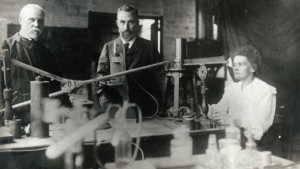
Research presented at the American Association for the Study of Liver Diseases (AASLD) The Liver Meeting 2025 highlights the potential benefits of elafibranor in managing fatigue related to mitochondrial function in patients with primary biliary cholangitis (PBC). The study, led by Mark Swain, MD, a professor at the Cumming School of Medicine and a member of The Calvin, Phoebe and Joan Snyder Institute for Chronic Diseases at the University of Calgary, reveals significant associations between the expression of ten proteins and the severity of fatigue.
The findings indicate that changes in the expression of these proteins, which are linked to mitochondrial function, correlate with improvements in fatigue levels among patients treated with elafibranor. “Fatigue, a common, debilitating symptom in patients with primary biliary cholangitis, has poorly understood pathophysiology,” said Swain. He noted that elafibranor, a PPARα/δ agonist approved as a second-line treatment for PBC, has demonstrated clinically meaningful reductions in fatigue.
Previous analyses presented at the European Association for the Study of the Liver (EASL) Congress 2025 also identified that elafibranor treatment affected the expression levels of several proteins associated with fatigue and mitochondrial function. These proteins include ATAD3B, BAX, CA14, CA5A, ECI1, GRPEL1, HPD, KYNU, MECR, and SOD2.
To further explore the relationship between protein expression and fatigue severity, investigators analyzed serum samples from patients enrolled in the phase 3 ELATIVE trial. These samples were collected at the start of the trial and again at week 52, utilizing the Olink® Explore HT proteomic panel for analysis. They assessed correlations between patient-reported fatigue measures, specifically the Patient-Reported Outcome Measurement Information System (PROMIS) Fatigue Short Form 7a and the PBC-40 Fatigue domain.
Among the 161 patients in the ELATIVE trial, data from 119 were included in the analysis. Of these, 46 patients reported moderate to severe fatigue according to the PROMIS Fatigue Short Form, while 63 met the same criteria based on the PBC-40 Fatigue domain. In the overall population, significant moderate-to-strong correlations were found between the expression of all ten proteins (r=0.29–0.89; P <.05). In patients with moderate to severe fatigue, specific proteins such as CA5A, ECI1, GRPEL1, KYNU, MECR, and SOD2 demonstrated significant correlations with fatigue levels at baseline (r=0.25–0.39; P <.05). Among the patients treated with elafibranor, those with baseline moderate to severe fatigue showed moderate-to-strong correlations (r=0.27–0.88) between changes in protein expression from baseline to week 52, with all correlations significant except for CA5A and ATAD3B, as well as MECR and CA14. In the subgroup of patients assessed through the PROMIS Fatigue Short Form, significant correlations were also identified between changes in expression of proteins BAX, ECI1, GRPEL1, HPD, KYNU, MECR, and SOD2, and reported fatigue levels (r=0.35–0.54; P <.05). The study concluded that elafibranor treatment resulted in changes in the expression of proteins associated with fatigue and mitochondrial function, which were significantly correlated with fatigue improvement. This suggests that the mechanism of PPARα/δ agonism may positively impact pathways related to fatigue, laying the groundwork for further research into how this treatment could enhance quality of life for patients suffering from PBC. The potential to address fatigue in this population may represent an important advancement in the management of PBC symptoms.







